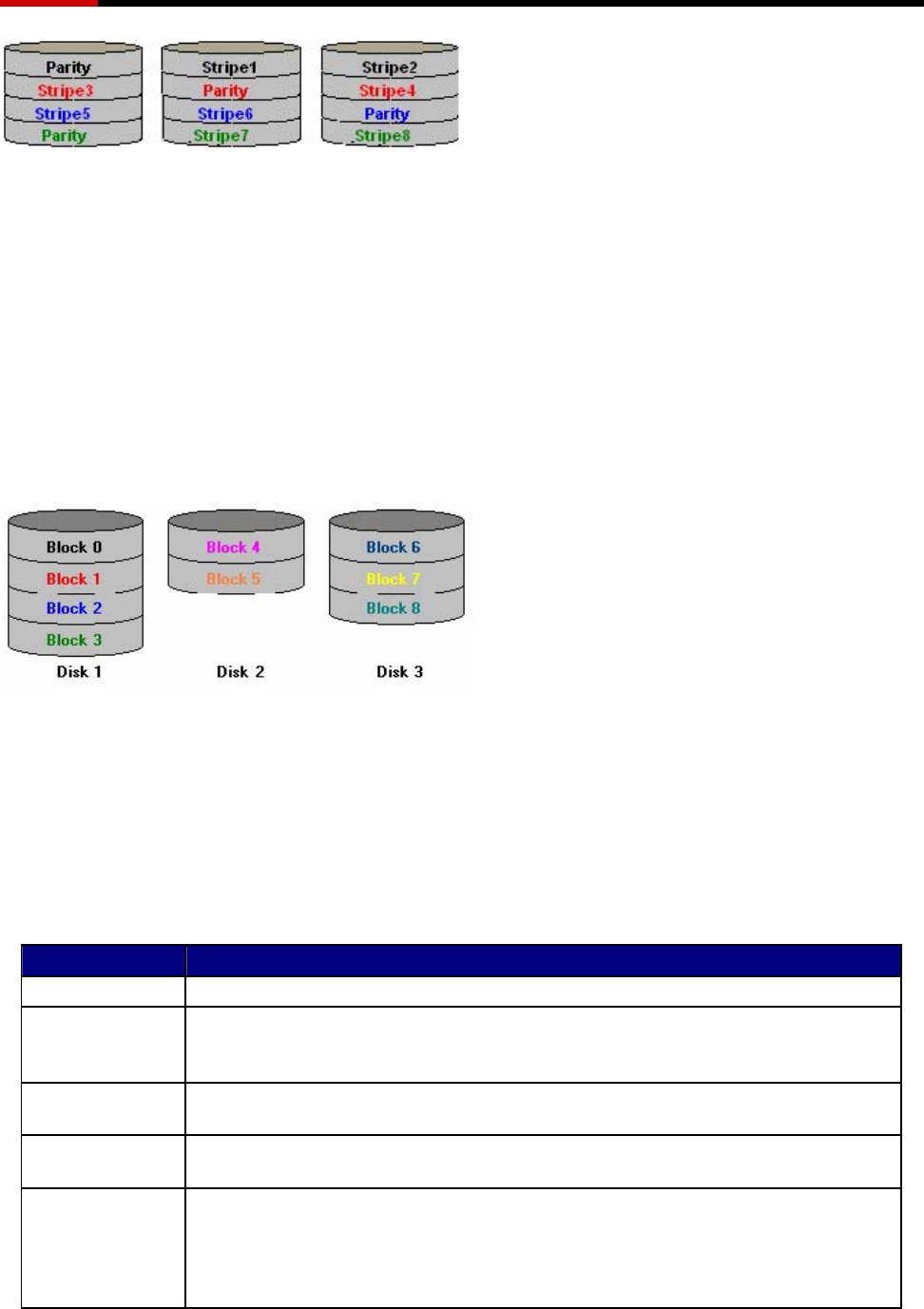
Server RSV-S8 User Manual
Parity RAID uses less capacity for protection and is the preferred method to reduce the cost per megabyte
for larger installations. Mirroring requires 100% increase in capacity to protect the data whereas the above
example using three hard drives only requires a 50% increase. The additional required capacity decreases
as the number of disks in the group increases (i.e., 33% for four drives or 25% for five drives).
In exchange for low overhead necessary to implement protection, Parity RAID degrades performance for all
write operations. The parity calculations for Parity RAID may result in write performance that is somewhat
slower than the write performance to a single disk.
2.3.5 CONCATENATION
The Concatenated mode combines multiple disks or segments of disks into a single large volume. It does
not provide any data protection or performance improvement but can be useful for utilizing leftover space
on disks. Concatenation allows the segments that make up the volume to be of different sizes.
2.3.6 SINGLE DRIVE / SEGMENT
The single drive is a virtual disk that can either be an entire disk drive or a segment of a single disk drive.
Single drive is the “Contiguous” configuration option when creating RAID Groups (or sets) in the SATARAID5
software.
2.4 RAID VOLUME STATUS
A RAID volume can be in any one of the following statuses.
STATUS MEANING
Good All disks are currently functioning as normal.
Reduced For RAID levels that provide data protection, one or more disks have failed but
the data is still available via the RAID algorithms. The failed disk should be
replaced as soon as possible to avoid loss of data.
Rebuilding A failed disk drive has been replaced and the data is being regenerated on the
replacement disk. When complete, the RAID Group will return to Good status.
Resynchronizing An error has occurred and RAID algorithms be regenerated on this RAID Group.
When complete, the RAID Group will return to Good status.
Failed One or more disks have failed and RAID algorithms can no longer regenerate the
data. The minimum number of failures required to reach this state depends on the
RAID level:
RAID 0, Concatenated, Contiguous: Single disk failure.
RAID 1, 10, and 5: Two disk failure.
7


















